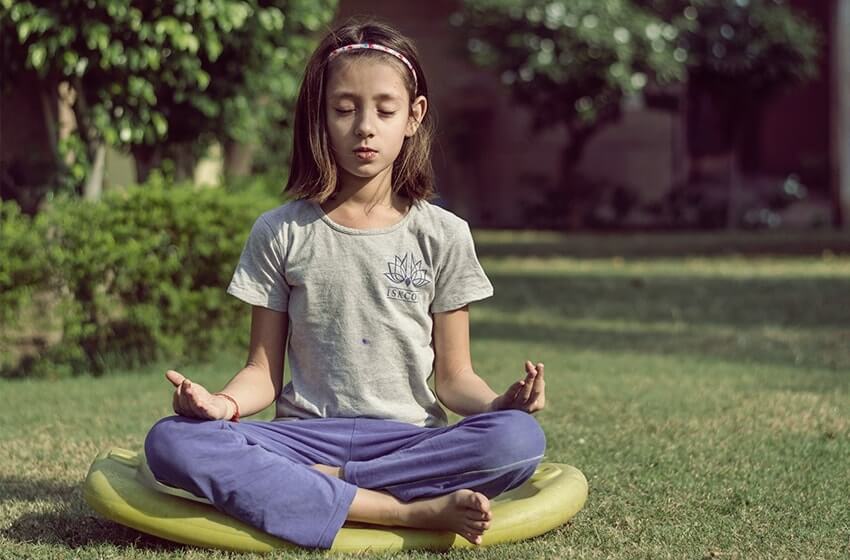Everyone benefits from practising mindfulness – it helps us regulate emotions, decrease stress and anxiety, and focus our attention on the task at hand.
As adults, we tend to learn these skills as we grow, but it’s never too early to implement mindfulness activities into your child’s daily routine.
There are plenty of benefits to mindfulness, some of which may not show initially but will certainly help your child as they become teenagers and then young adults.
There are so many ways to practise mindfulness so if you find that one way doesn’t resonate with your child, there are other options to choose from.
It is completely natural for children (and adults) to become distracted while practising mindfulness, but it’s important to keep coming back to it and not just giving up.
Benefits of Practising Mindfulness for Children:
1. Strengthening Self-Control
Mindfulness allows you to focus your attention on your body and your breath, basically bringing your focus back to your body and how you are feeling internally.
2. Lowers Anxiety and Stress
We don’t like to think that children are suffering anxiety and stress, but it is on the increase due to packed schedules, and pressures from school and friends.
There is less time spent in play and outdoors, which doesn’t give them a chance to let off steam and just be themselves.
Mindfulness allows a child suffering from anxiety and stress to slow down and regulate their breathing and heart rate.
3. Better Decision Making
We know that children often make rash decisions, even when they should know better. There are thoughts that even practising mindfulness for 15 minutes a day helps to make faster and better decisions.
4. Emotional Regulation
Along with making rash decisions, children certainly don’t have the ability to regulate their emotions very well until they are much older.
Mindfulness allows a child to learn how to regulate their moods, including being upset and angry, in a way that is healthy and not destructive.
Fun Mindfulness Activities for Children (and Their Older Siblings):
Mindfulness doesn’t need to be for young children only; older children and teens can certainly benefit from a daily practise of mindfulness, and we encourage you to get them to try a range of activities.
Some popular activities to try with children and teens include:
1. Posing
Similar to yoga poses, there is a range of child-friendly poses that help them focus on what their body is doing. The Superman and The Wonder Woman are two of the most popular poses.
2. Spidey-Senses
Older children are likely to know the term “spidey-senses”, particularly those who like Spiderman!
This is all about getting your children to turn on their senses and tune in to what’s going on around them – smells, sights, tastes, hearing, and so on.
3. Going on Safari
This is a great way to get some exercise while learning to be mindful. Your children need to notice as many birds, animals, and insects as they can.
The aim is to focus their senses on finding these animals and not getting distracted by everything else happening around them.
4. Mindful Jar
This is perfect for everyone, from children to adults. Simply get a clear jar and fill almost all the way with water. Add a big spoonful of glitter glue or glue and dry glitter, put the lid on, and shake to make the glitter swirl.
Positive Psychology provides the following script for your children to really help them understand why mindfulness is such an important practice.
“Imagine that the glitter is like your thoughts when you’re stressed, mad, or upset. See how they whirl around and make it really hard to see clearly? That’s why it’s so easy to make silly decisions when you’re upset – because you’re not thinking clearly. Don’t worry this is normal and it happens in all of us (yep, grownups too).
[Now put the jar down in front of them.]
Now watch what happens when you’re still for a couple of moments. Keep watching. See how the glitter starts to settle and the water clears? Your mind works the same way. When you’re calm for a little while, your thoughts start to settle and you start to see things much clearer. Deep breaths during this calming process can help us settle when we feel a lot of emotions”
(Karen Young, 2017).
Treasured Tots has implemented a Wellness Program across all centres that focus on wellbeing, resilience, and awareness.
As part of the program, children practise mindfulness techniques including meditation, positive affirmations, and self-awareness practices, learning the skills they need to take them through life.
It can be hard to find time to sit down with your child daily and get them practising mindfulness.
Finding an early learning centre that includes this into their daily schedule is a great way to ensure your child is learning the skills they need when they get older.
Image Credit: Unsplash
This article is published by our independent team of health and wellness pundits that publish original and informative content to empower readers to take charge of their health and embark on a physically, mentally, and emotionally balanced lifestyle.







































Leave a Reply